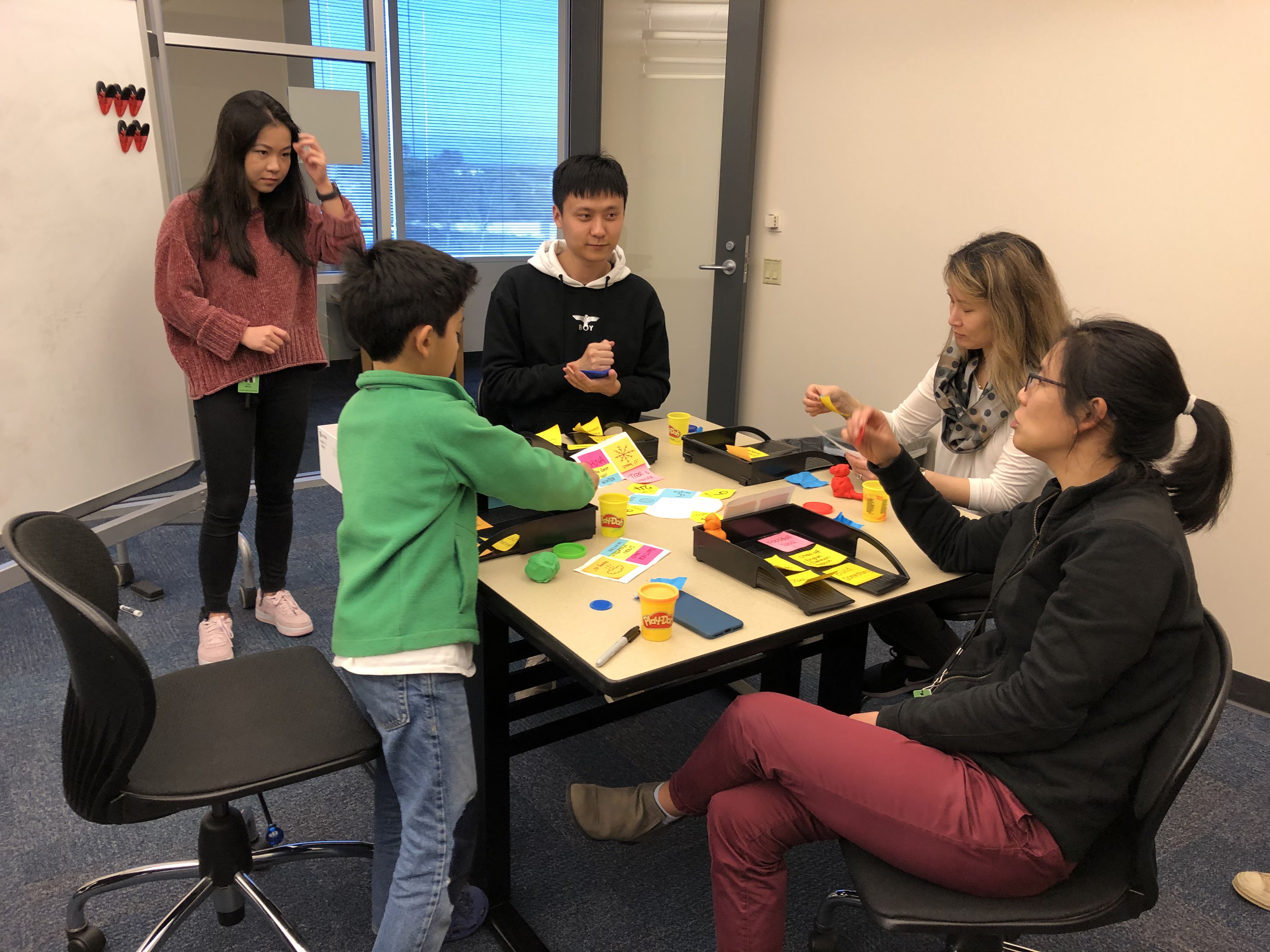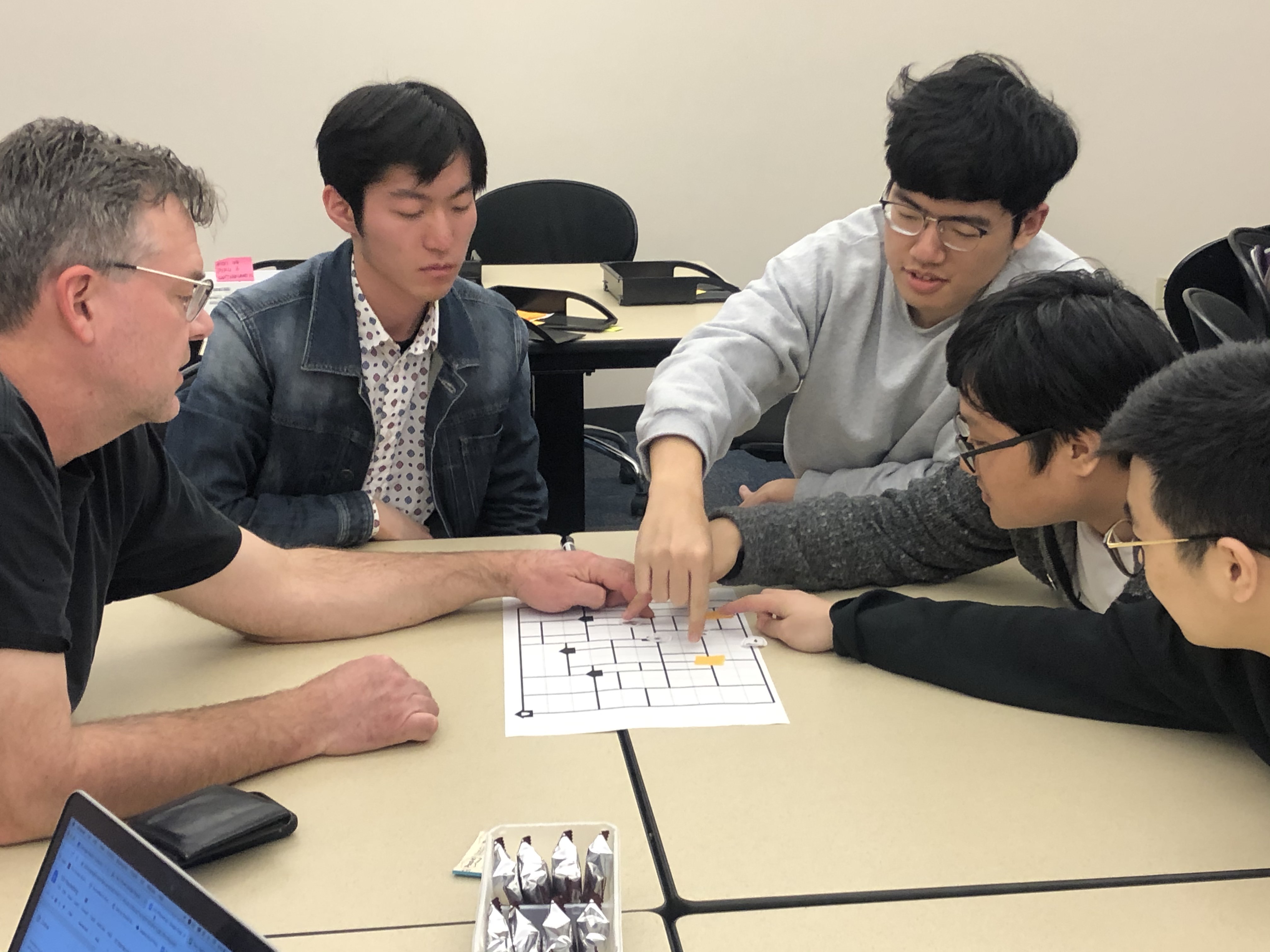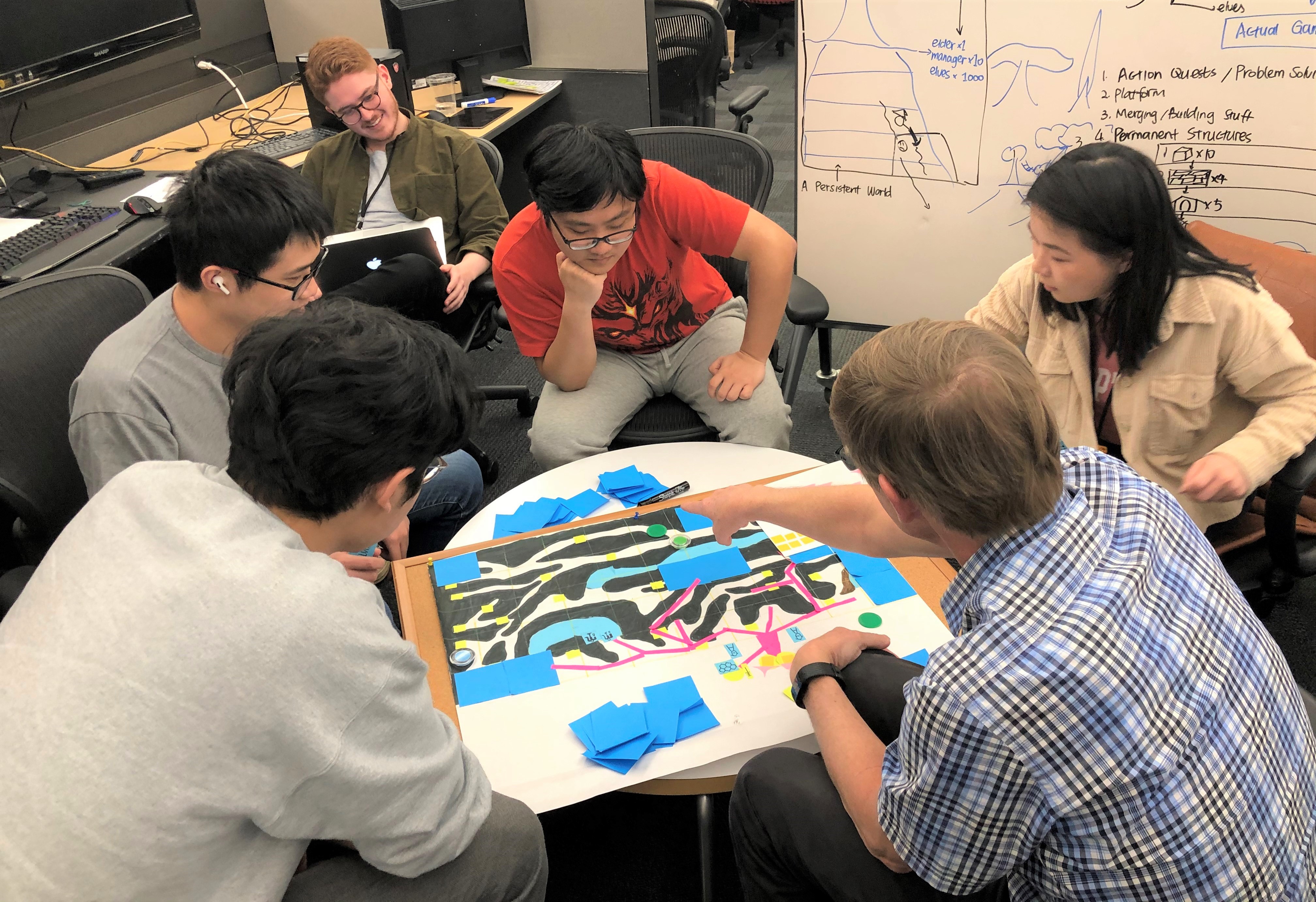Playtest
This page records the observations of playtesting and how we have learned from them.
Week 3: 4 Paper Prototypes


People testing 2 of our 4 prototypes in week 3.
In Week 3 we invited fellow classmates and EA individuals to play each of the early 5 prototypes and ask for their opinions. Also, during the quarters we had 7 guests coming from EA who evaluated our one-page design document and gave detailed feedback.
Following are the takeaways:
- Think about State Share as the core mechanism. Many of our ideas are fun conceptually but also replaceable because State Share only serves as a way to transfer limited in-game status, which is not we want.
- Differentiate State Share from online multiplayer feature. We need to think if the prototype also works or even feels better under online simultaneous multiplayer structure. If it is, then it’s probably not a good design for State Share.
- Be careful about the theme. Our game need to respect user’s privacy and their taste for a “normal” game since our game is targeted for streaming community such as Youtube streaming.
- Replayablitity. This is also a problem with regard to our target demographic. In this respect, puzzle games have the biggest issue so we opted out of making a puzzle game.
Week 7: Two Prototypes
We ran a playtest in week 7 just before the halves to make sure our design really highlights the State Share and feels good. After each prototype finished, we asked our guests a few questions and kept record of their feedback.
Virus vs. Cells
Observations:
The gameplay is pretty quick because the level is short and more importantly, the players all had a vision of what they were expected to do even we didn’t tell them.
However, when they reached the first splitting point, they are not fully aware of the splitting mechanism so they reacted: “Is this a bug?”
And for the control part, it wasn’t immediately obvious that they could double jump.
Gameplay:
“Jumping and puzzle-solving.”
“Kinda Pac-man-y, and a little bit of puzzle solving, but there was only one place where that applied.”
Things you like about this game:
“Animation of the ball, you can jump twice in the air, and eating other cells.”
“Riding the cells, splitting and recombining with other cells.”
Things you don’t like about this game:
“I felt like the left and right weren’t responsive enough.” - as it didn’t go as fast as they expected.
“Sometimes I made a mistake, and I can’t climb the wall to go back.”
Conclusion:
The prototype is strong in conveying basic mechanism and has very clear goal. The demerits are that the players lack the motivation for both splitting the cell and “sacrificing” themselves to be merged.
Next step:
Evidently the next step for this prototype is to design a more engaging scene where players do feel the necessity to invite others into the game and recombining themselves. Also, for now the connection between two players is weak as they barely feel connected during the process, so adding more interaction between them is also worth consideration.
Treehouse
We also ran a playtest on paper for the Treehouse idea. 
Students and faculty playtesting the Treehouse prototype.
Observations:
The players talked but mainly to our game host rather than to one another.
They were unclear about the bee and bear coming from outside the tree.
When the game host prompted building things they did.
Gameplay:
“Grow the tree.”
“Reveal the blocks of the map.”
“It seems like there is no end to this game, so the goal for me is just to cooperate and have fun with other players.”
Things you like about this game:
“Exploring the map, buying and building things, and to see the surprise events of the birdhouse and the bee.”
“Buying something I have never seen before.”
Things you don’t like about this game:
“That the tree grows by itself, and the fact that there’s no strategy to exploring.”
“Watching an elf place a house way over by the waterfall.”
“It is super difficult to have a lont-term strategy right now.”
Conclusion:
This prototype took actually longer than expected to playtest, mainly bacause players were attracted in the game and wanted to wait for the next round (we actually played one more round). In this sense the mechanism works pretty well. However, many complained that they don’t have a control over themselves, let alone the tree because seemingly only the elder decide how the tree grows.
Next step:
Players should get rewarded for doing things for the tree, like having a monument or leaving their names somewhere in the world.